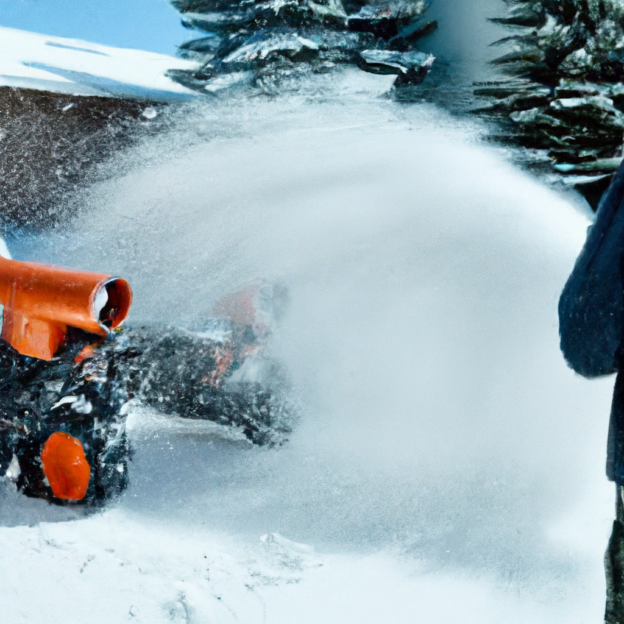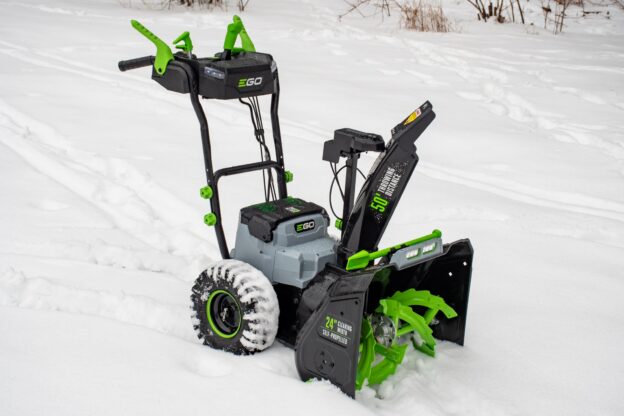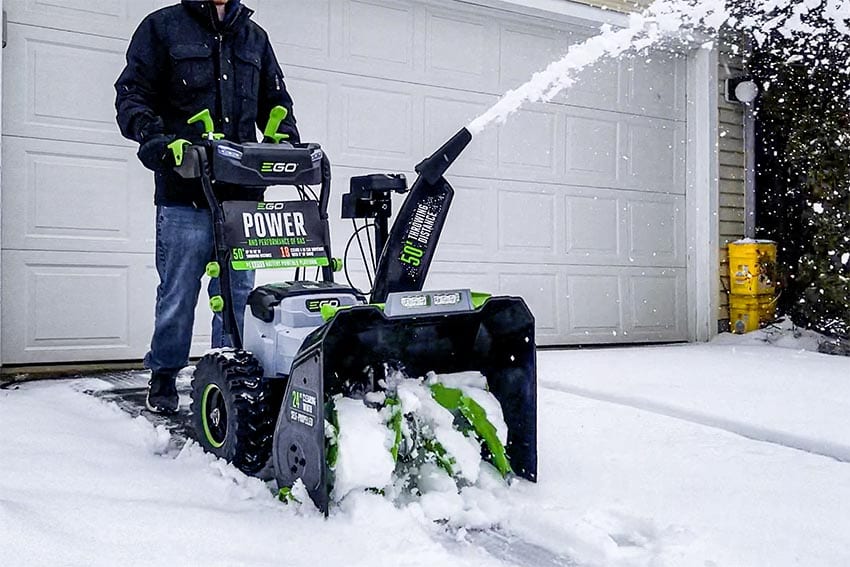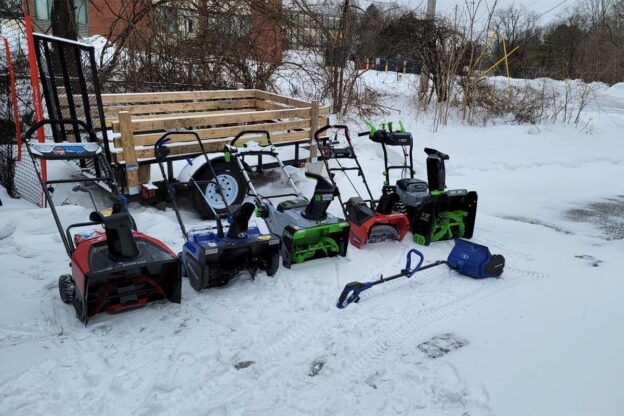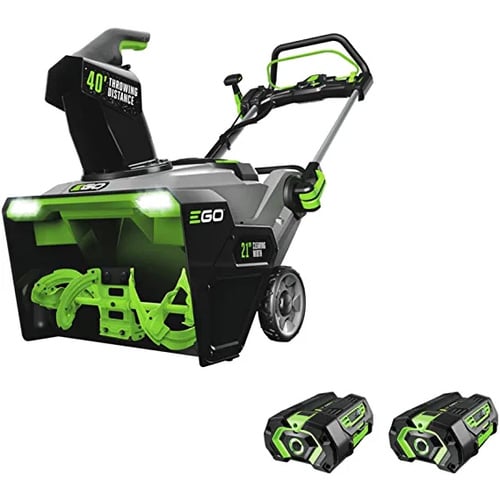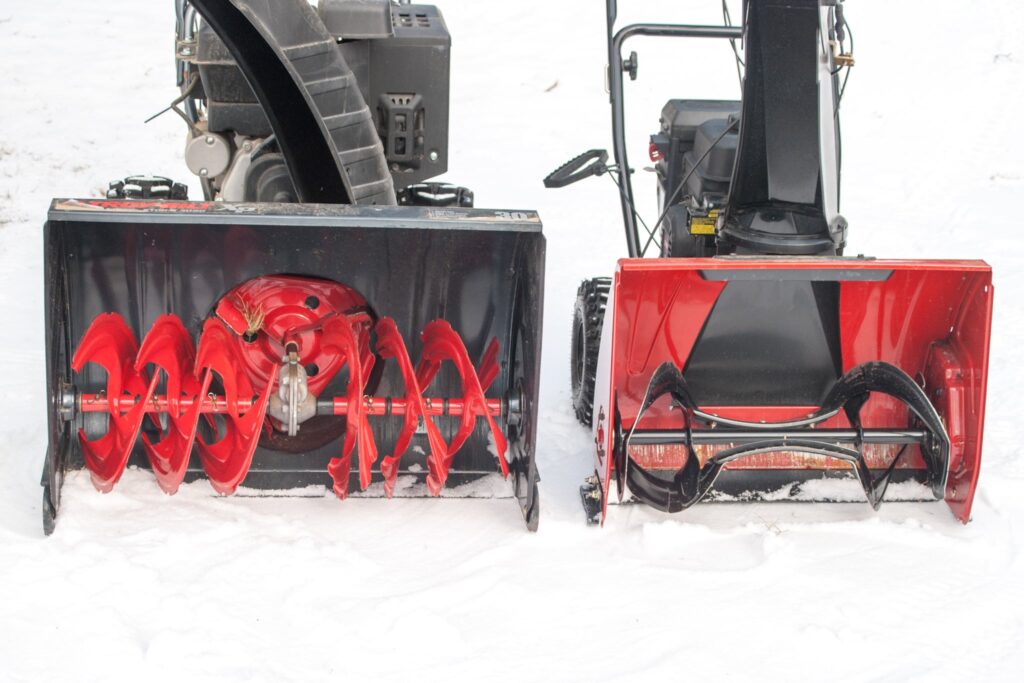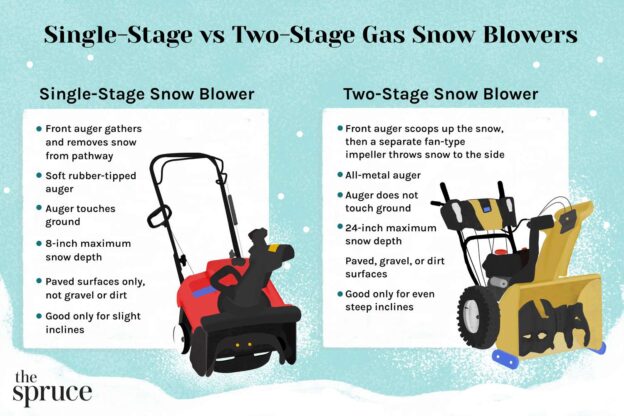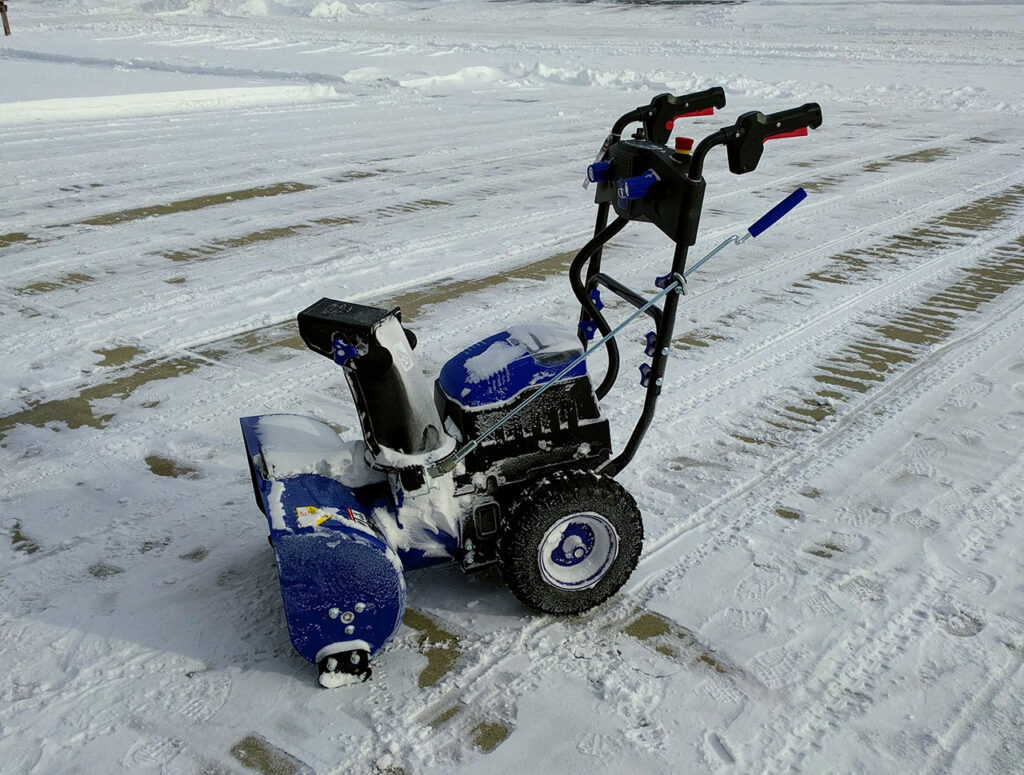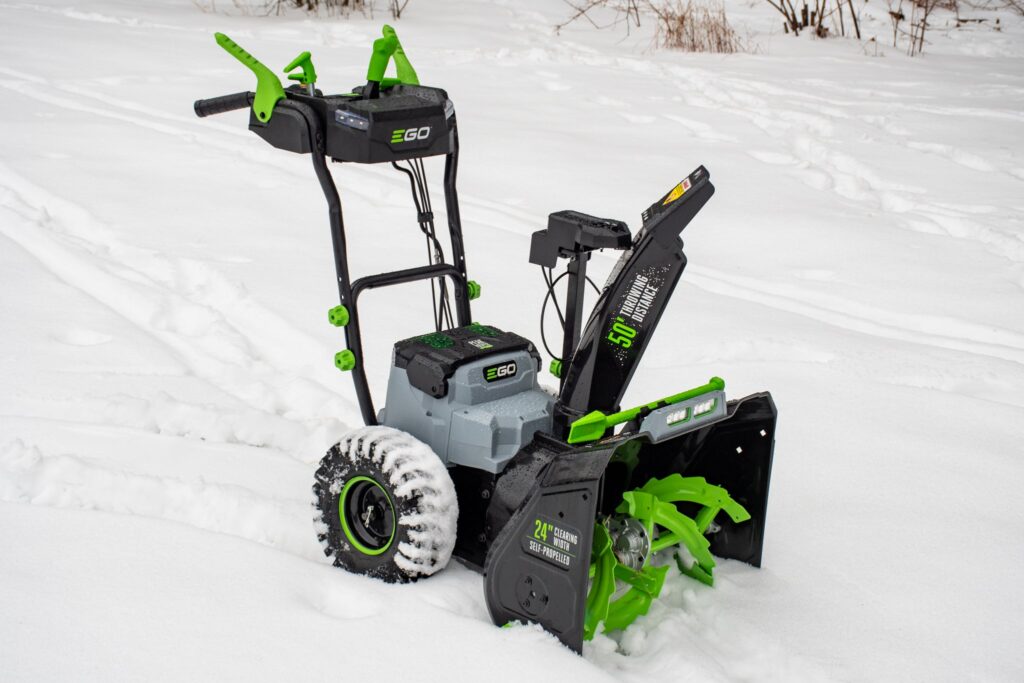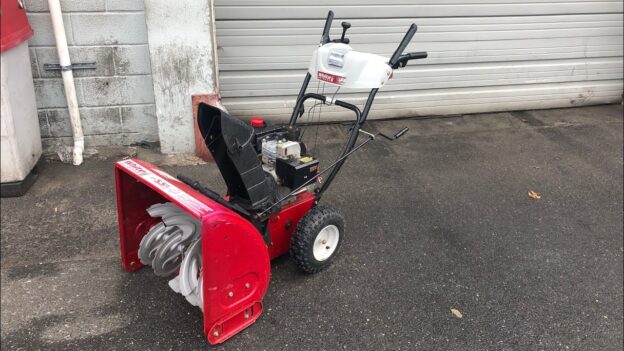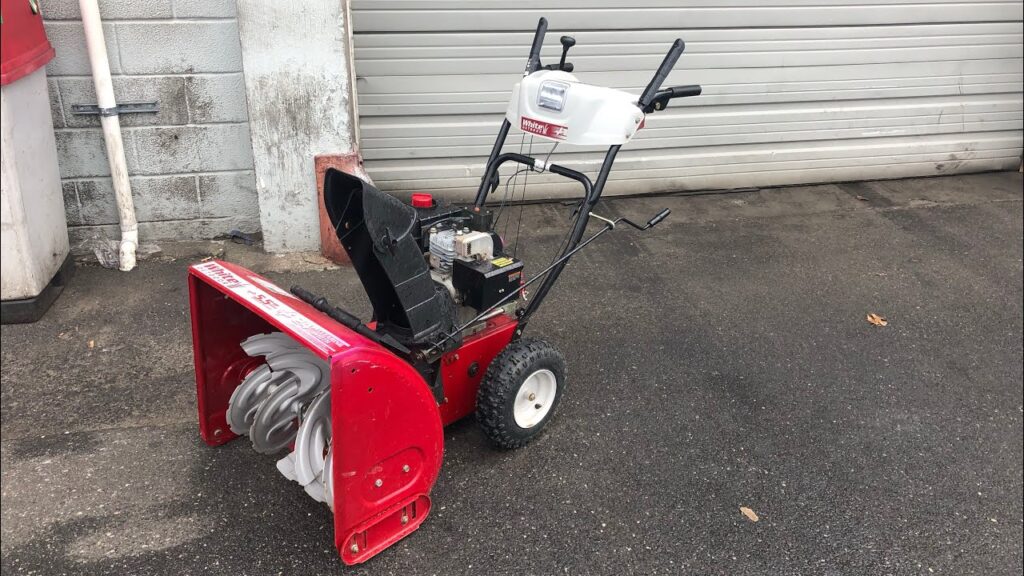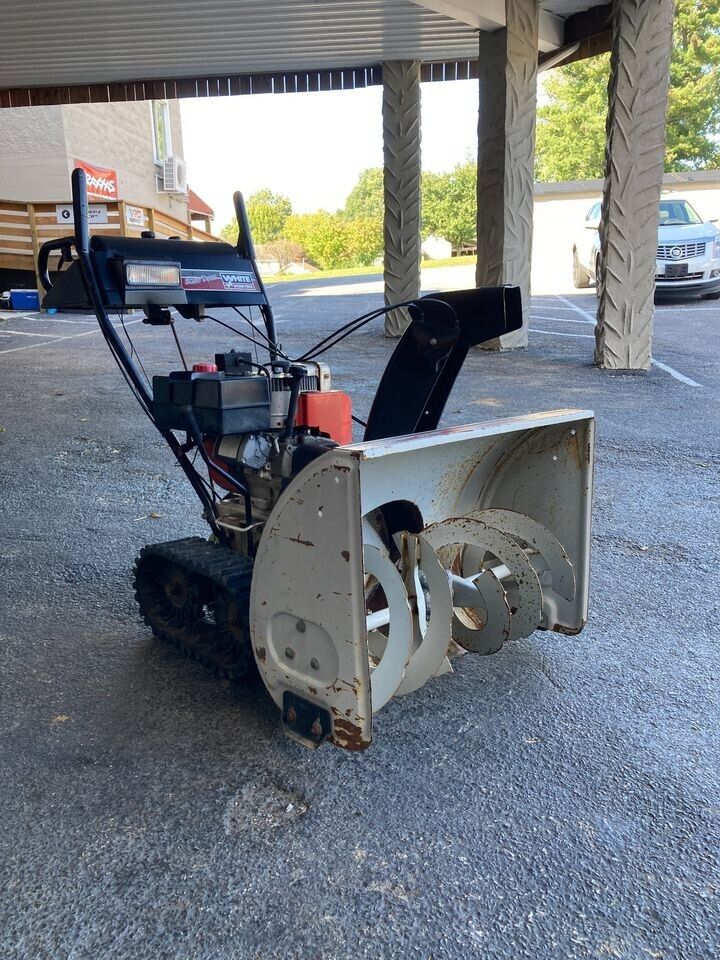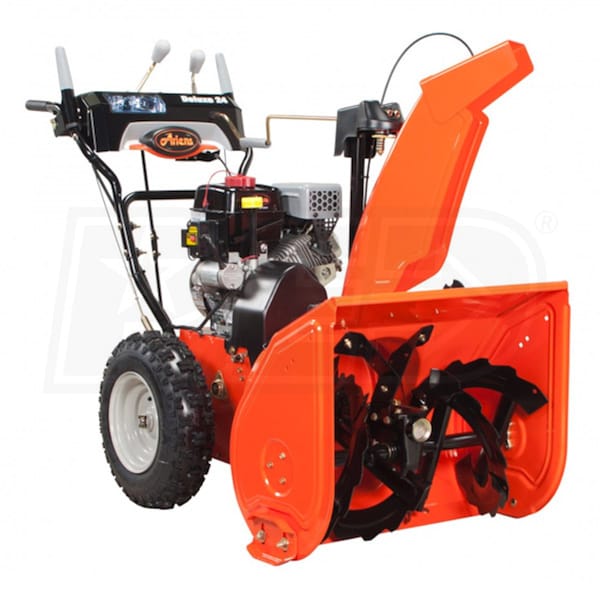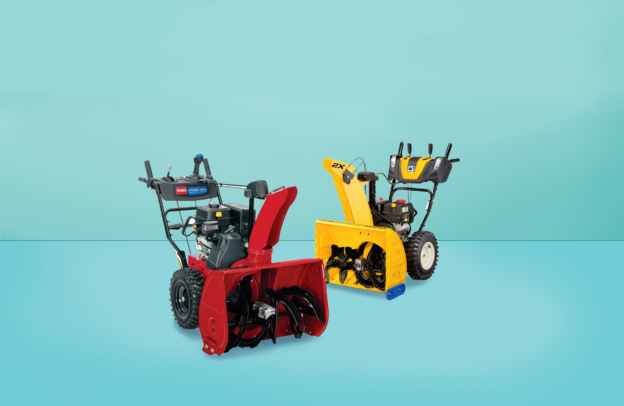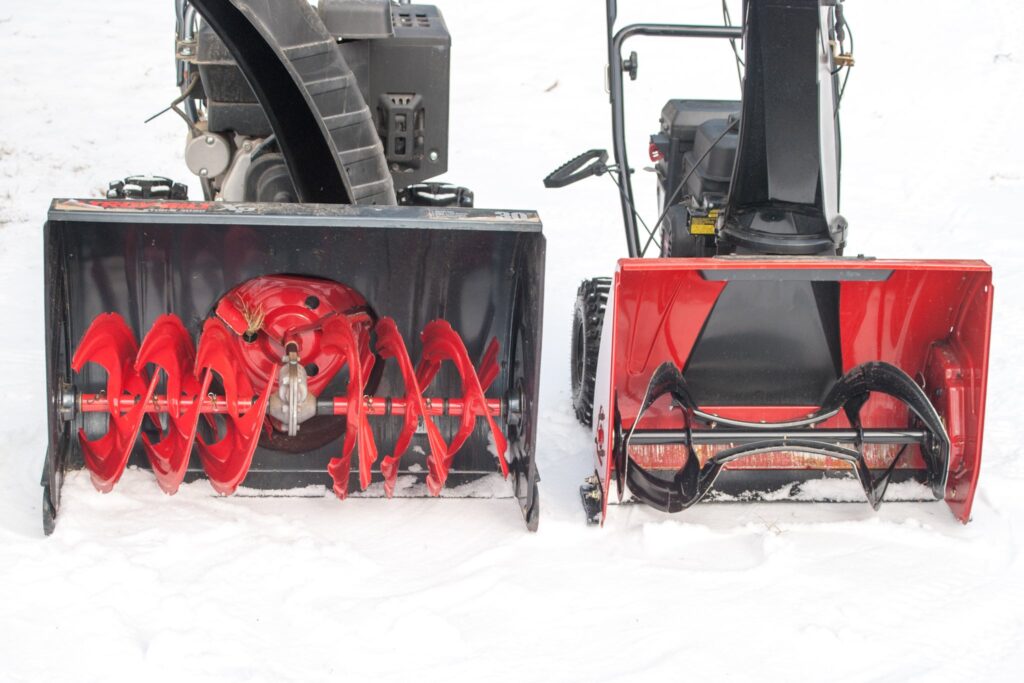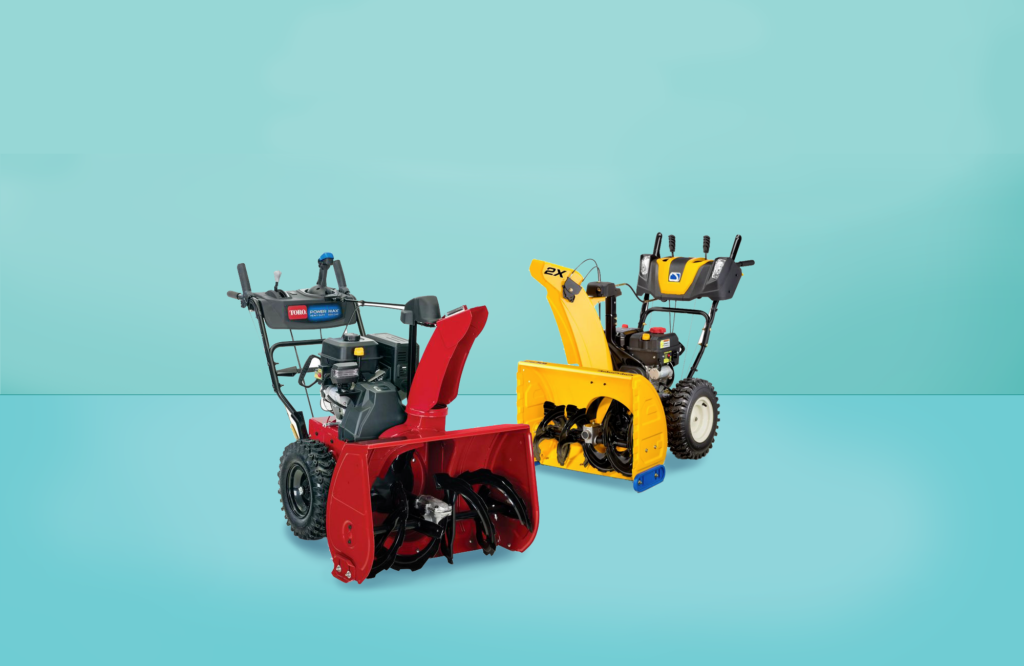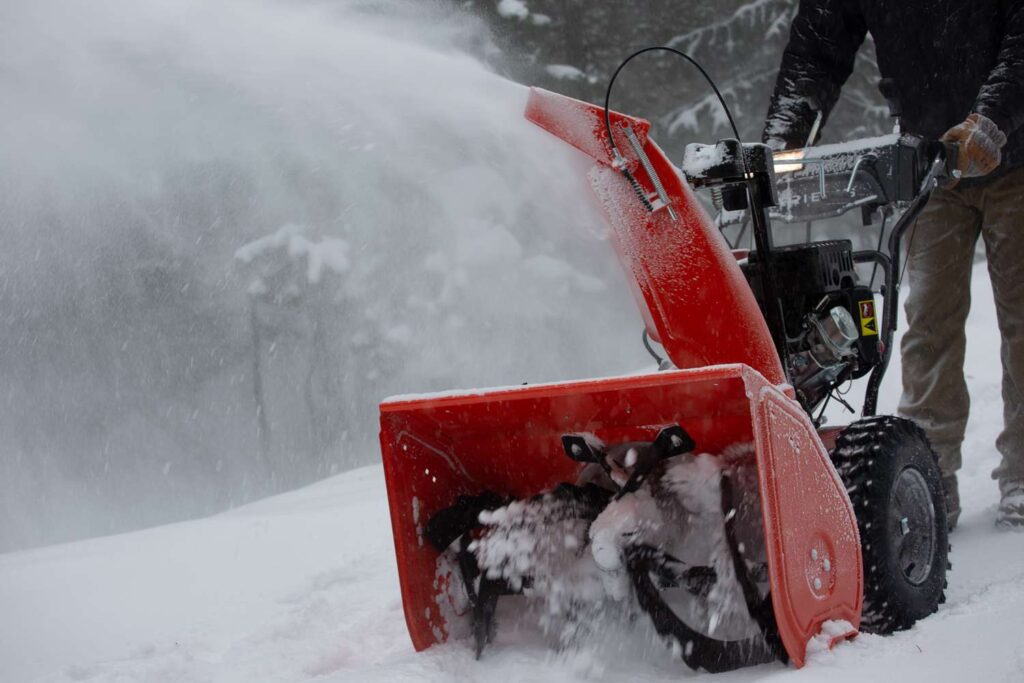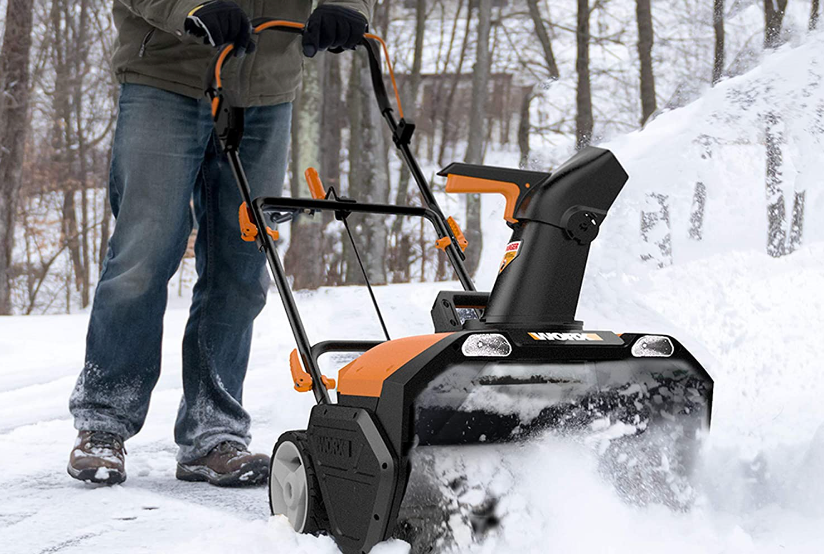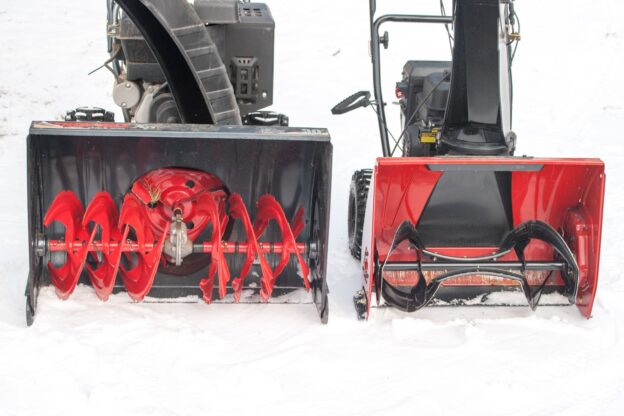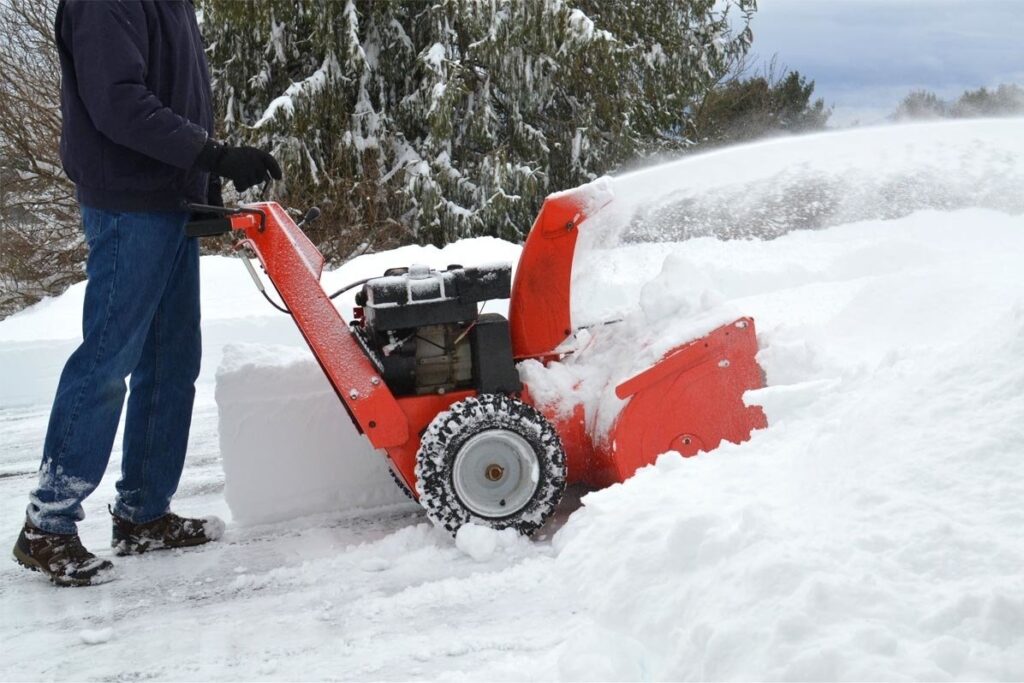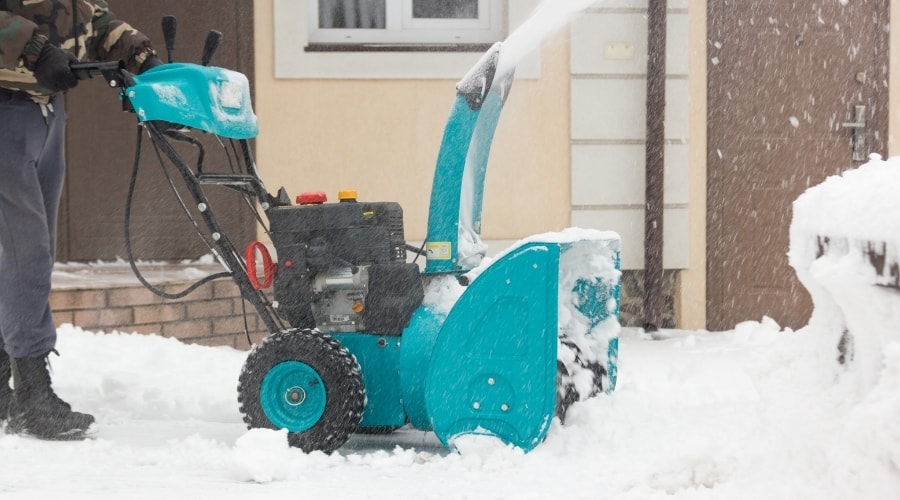So, you wake up one winter morning to find your driveway covered in a thick layer of snow. Your trusty snow shovel is nowhere in sight, and you’re dreading the thought of spending hours out in the freezing cold trying to clear it all away. But fear not, because there’s another hero ready to save the day – the mighty snowblower. This incredible machine is designed to effortlessly blast away snow, leaving behind a clear path. But have you ever wondered how it actually works? Let’s take a closer look at the inner workings of a snowblower and uncover the secrets behind its snow-clearing superpowers.

Overview of Snowblowers
Snowblowers are mechanical devices used for clearing snow from driveways, sidewalks, and other areas. They provide a convenient and efficient way to remove snow, saving you time and effort compared to shoveling. Snowblowers come in different types and have various key components that contribute to their functionality and performance.
Types of Snowblowers
There are three main types of snowblowers: gas-powered, electric, and battery-powered. Each type has its own advantages and considerations to keep in mind when choosing the right one for your needs.
Key Components of a Snowblower
Snowblowers consist of several key components that work together to effectively clear snow. These components include the clearing path, the auger and impeller, and the engine or motor.
Power Source
When it comes to the power source, you have three options to choose from: gas-powered, electric, and battery-powered snowblowers. Each type has its own strengths and considerations, so it’s important to understand the differences before making a decision.
Gas-Powered Snowblowers
Gas-powered snowblowers are known for their high power and ability to handle heavy snowfall. They are equipped with a gasoline engine that provides sufficient torque to tackle even the toughest snow conditions. However, they require regular maintenance, including fuel and oil changes, and can be noisy and produce emissions.
Electric Snowblowers
Electric snowblowers are powered by electricity and do not produce any emissions. They are generally more lightweight and portable than gas-powered snowblowers, making them easier to maneuver. Electric snowblowers are best suited for lighter snowfall and smaller areas, as they may struggle with heavy or wet snow.
Battery-Powered Snowblowers
Battery-powered snowblowers combine the benefits of electric snowblowers with the portability of gas-powered ones. They are cordless and use a rechargeable battery to operate. While they may not provide the same power as gas-powered snowblowers, they are convenient and ideal for small to medium-sized properties.
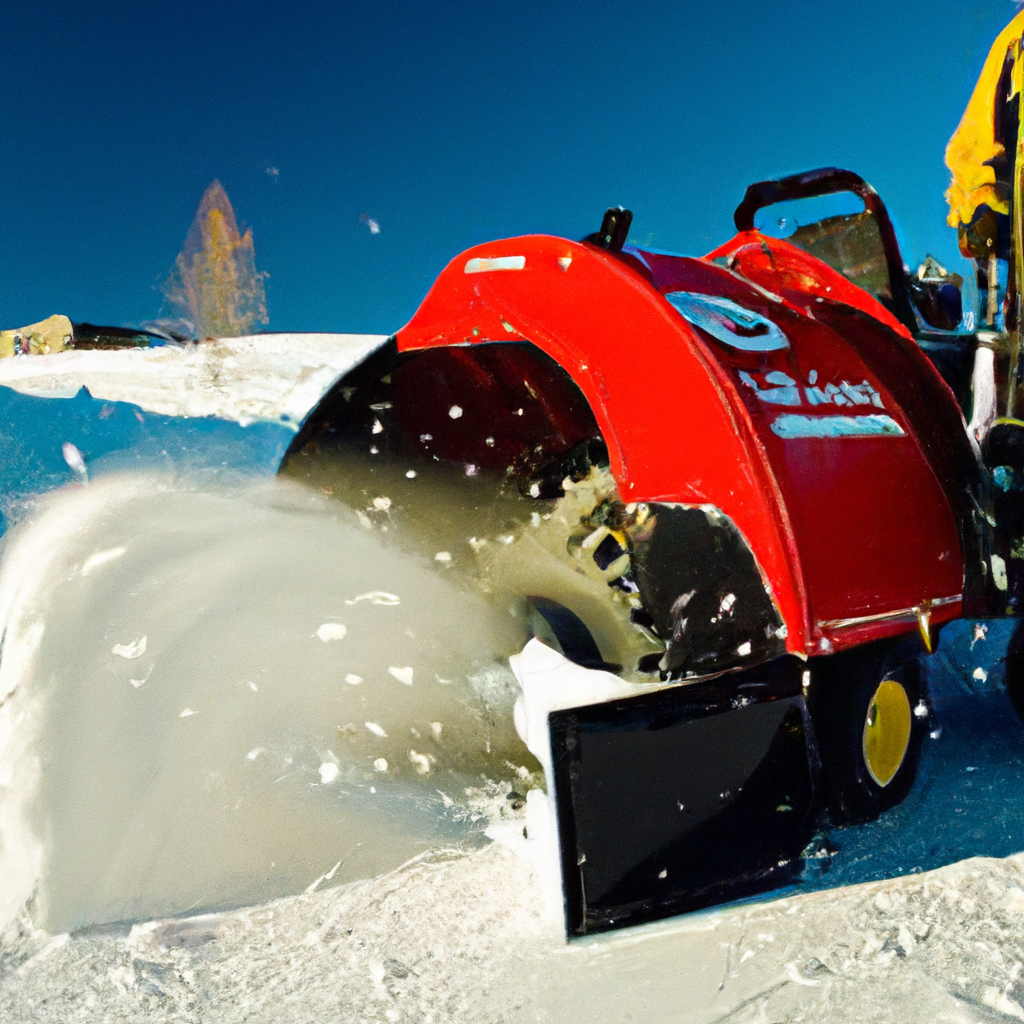
Working Mechanism
Understanding the working mechanism of a snowblower is crucial to its proper operation and maintenance. When it comes to clearing snow, there are three main aspects to consider: the clearing path, the auger and impeller, and the engine or motor.
Clearing Path
The clearing path is the width of the area that the snowblower can clear in a single pass. It determines how quickly you can clear a given area. Snowblowers generally have clearing paths ranging from 20 to 30 inches, with wider paths being more efficient for larger areas.
Auger and Impeller
The auger is the spiral-shaped component at the front of the snowblower that scoops up the snow. It breaks up the snow and feeds it into the impeller, which is a fan-like mechanism that throws the snow out of the discharge chute. The auger and impeller work together to propel and throw the snow away from the clearing path.
Engine or Motor
The engine or motor provides the power needed to drive the auger and impeller. Gas-powered snowblowers use combustion engines, while electric and battery-powered snowblowers use electric motors. The engine or motor quality and power output play a significant role in the snowblower’s performance and ability to handle different snow conditions.
Starting the Snowblower
Starting a snowblower depends on its power source. Gas-powered and electric snowblowers have different starting procedures.
Gas-Powered Snowblowers
To start a gas-powered snowblower, ensure that it is on a flat surface and that the fuel tank is filled with fresh gasoline mixed with the appropriate oil ratio. This varies depending on the model. Engage the fuel valve if present, adjust the choke, and pull the starter cord with a smooth and firm motion. Follow the manufacturer’s instructions for your specific model to ensure a successful start.
Electric Snowblowers
Starting an electric snowblower is relatively simple. Plug it into a power outlet and flip the switch or press the start button. Make sure the extension cord is properly connected and unraveled to prevent any damage or accidents. Always read the instruction manual for your electric snowblower to familiarize yourself with the starting procedure and any safety guidelines.
Operating the Snowblower
Once your snowblower is started, you are ready to clear the snow. Operating a snowblower involves adjusting the chute, adjusting the deflector, and using the speed and direction controls.
Adjusting the Chute
The chute is the component that directs the snow being thrown out of the snowblower. Most snowblowers allow you to adjust the chute’s direction manually or with the help of a control panel. This allows you to control where the snow is thrown and avoid undesirable areas, such as windows or parked cars.
Adjusting the Deflector
The deflector is the part of the chute that controls the height or distance at which the snow is thrown. It can usually be adjusted manually or with a control panel. By adjusting the deflector, you can control the trajectory of the snow and ensure that it is thrown to the desired distance or height.
Speed and Direction Controls
Snowblowers have speed and direction controls that allow you to control the forward and backward movement of the machine. These controls vary depending on the model and can include levers, buttons, or dials. By adjusting the speed and direction controls, you can maneuver the snowblower effectively and efficiently clear the snow.
Safety Features
Snowblowers come equipped with various safety features to protect the operator and ensure safe operation. Understanding and utilizing these features is essential for preventing accidents and injuries.
Emergency Shut-Off
Snowblowers are equipped with an emergency shut-off switch or lever that allows you to quickly stop the machine in case of an emergency. Familiarize yourself with the location and operation of this shut-off feature before operating the snowblower.
Clearing Clogs
Clogs can occur when the snowblower encounters heavy or wet snow, leading to a disruption in the clearing process. Most snowblowers have a clog-clearing mechanism that allows you to safely remove the obstruction without putting your hands near the moving parts. Follow the manufacturer’s instructions on how to clear clogs and ensure safe operation.
Safety Shields and Covers
Snowblowers have safety shields and covers that protect the operator from debris and snow being thrown out of the machine. It is important to keep these shields and covers in place and in good condition to prevent any accidents or injuries. Regularly inspect the snowblower for any damage or wear and replace or repair any faulty parts immediately.
Maintenance and Care
Proper maintenance and care are crucial to the longevity and performance of your snowblower. Regular maintenance tasks include oil changes, spark plug replacements, and belt tension adjustments.
Oil Change
Gas-powered snowblowers require regular oil changes to ensure proper lubrication of the engine. Follow the manufacturer’s recommendations for the oil type and schedule for your specific snowblower. Remember to drain the old oil, replace the oil filter if applicable, and refill with fresh oil at the recommended level.
Spark Plug Replacement
The spark plug ignites the fuel mixture in a gas-powered snowblower’s engine, enabling it to start and run smoothly. Over time, spark plugs can become dirty or worn, affecting the engine’s performance. Regularly inspect the spark plug and replace it if necessary, following the manufacturer’s guidelines and using the correct spark plug for your snowblower.
Belt Tension Adjustment
Snowblowers with belts require periodic tension adjustments to ensure optimal performance. Belts can become loose or stretched with use and need to be properly tensioned. Refer to the manufacturer’s instructions on how to adjust the belt tension for your specific snowblower model. Avoid over-tightening the belts as it can cause damage or premature wear.
Choosing the Right Snowblower
When selecting a snowblower, several factors should be considered, such as snowfall levels and property size.
Considerations Based on Snowfall
If you experience heavy or wet snowfall, a gas-powered snowblower with a high-powered engine is recommended. It will provide the necessary torque to handle challenging snow conditions. For light to moderate snowfall, electric or battery-powered snowblowers can be suitable options.
Considerations Based on Property Size
The size of your property also plays a role in choosing the right snowblower. For larger areas, a snowblower with a wider clearing path and higher power output is recommended to save time and effort. Smaller properties can be efficiently cleared with narrower clearing paths or electric snowblowers.
Common Snowblower Problems
While snowblowers are designed to be reliable, they can encounter certain issues. Knowing how to troubleshoot common problems can help you quickly resolve them and get your snowblower back in operation.
Engine Not Starting
If your snowblower’s engine is not starting, check the fuel and oil levels, ensure that the spark plug is clean and properly connected, and verify that the ignition switch is in the correct position. Refer to the manufacturer’s troubleshooting guide for specific steps to diagnose and fix the issue.
Clogging Issues
Clogs can occur when the snowblower encounters heavy or wet snow. To prevent clogs, use the snowblower at a slower speed, particularly when dealing with dense or slushy snow. If a clog does occur, follow the manufacturer’s instructions on safely clearing it.
Uneven Snow Clearing
If your snowblower is not clearing snow evenly, check the auger and impeller for any damage or obstructions. Make sure the auger is spinning freely and not encountering any resistance. Adjust the chute and deflector as needed to ensure the snow is being thrown in the desired direction.
Conclusion
Snowblowers are a valuable tool for clearing snow quickly and efficiently. By understanding the different types, key components, and working mechanisms of snowblowers, you can make an informed decision when choosing the right one for your needs. Operating a snowblower safely and properly, maintaining it regularly, and addressing any issues promptly will ensure its reliable performance for years to come. Stay safe and enjoy the convenience of a snowblower to conquer those winter storms.
